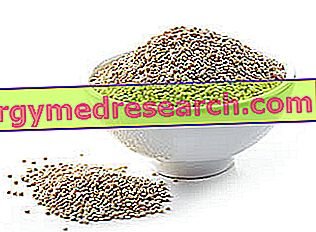
Melanosome transfer inhibitors
How do they work?
As previously described, the melanization of the epidermal tissues involves two phases: the formation of melanin inside the melanocytes and the transport of the melanin contained in the melanosmi to the keratinocytes.

Alterations in the latter phase can lead to serious skin pigmentation disorders, so that, at present, the inhibition of the transfer of melanosomes represents one of the most valid options to regularize skin pigmentation, both from a therapeutic and a cosmetic point of view.
Nicotinamide
Among the active ingredients that have been shown to interfere with the transfer of melanosomes to keratinocytes, Niacinamide (or Nicotinamide) is cited, a biologically active amide of vitamin B3, which occurs naturally in most foods (excluding fats) and which can also be synthesized by the body from the amino acid tryptophan.
Nicotinamide deficiency causes skin lesions similar to sunburn and stomatitis (pellagra). Only recently have beneficial effects been recognized at skin level, including a marked anti-inflammatory and antioxidant activity, and the ability to inhibit the transfer of melanosomes to keratinocytes (when used in concentrations of at least 5% for a period of 2-4 weeks 1).
At dosages of 2%, however, it showed visible signs of improvement in hyperpigmentation, but with statistically less appreciable results. Several studies have been undertaken to test the ability of Niacinamide to inhibit the activity of tyrosinase and to act on the activity of the melanocyte, but the results gave negative results. Treatment with Niacinamide can improve hyperpigmentation damage, with the advantage of not having side effects and improving the brightness of the skin by decreasing redness and yellow tones.
Soy derivatives
Soy derivatives (milk and milk proteins) are able to induce skin depigmentation 2 by inhibiting the activation of a receptor (PAR-2), located on the keratinocyte membrane, responsible for regulating their phagocytic activity against the melanosomes.
The activity of these compounds has been demonstrated both in vivo and in vitro and is reversible, therefore without side effects. The limit to the use of soy derivatives is their thermolability.
Camouflage
If the skin spots are particularly evident, it is possible to camouflage them with a specific technique: it is that of the camouflage, that is the correction of the color through the application of complementary tricks or coloring, capable of neutralizing and covering the imperfection. Generally, reddish spots are covered with green color correctors while brownish spots can be corrected with orange. It is advisable to even out the whole with the help of a suitable foundation with a high covering action.
Classification of products on the market
The main purpose of depigmenting cosmetic products is to improve the brightness of the skin, obtain greater uniformity of color and prevent the onset of further skin spots. Stain reduction is a prerogative mostly dermatological. This is due to the fact that many really effective active ingredients are not allowed in cosmetic use because their toxicological profile is still doubtful. In any case, the cosmetic product has a complementary action and, if used consistently, can clearly satisfy the consumer's expectations. For this purpose, it is possible to classify the cosmetic products on the market based on three categories:
- Preventive action treatments, to be used for long periods, to delay the appearance of pigmentation disorders. They are generally low-medium cost products, containing sunscreens, antioxidants and active moisturizers.
- Medium-long term treatments for subjects who already have pigmentation disorders. In this category it is possible to include medium-high price products, rich in depigmenting active ingredients, where in some cases the concentration is clearly specified; similar products are able to cover all or almost all of the aforementioned mechanisms of action (tyrosinase inhibition, inhibition of melanosome transport, etc.). They contain sunscreens, antioxidants and exfoliating agents.
- Intensive treatments, which aim at the fast resolution of the problem, characterized by simple pharmaceutical forms (liquid and gelled) with a very high concentration of active ingredients, generally declared on the packaging. The product image is decidedly pharmaceutical and the price is very high.
List of Cosmetics reviewed in the Depigmenting category
Bearberry whitening cream
Defense white lightening concentrate
Neovadiol Ultra-Densifying Lightener
White Lucency / anti-spot day cream
White Lucency / anti-blemish serum
Cream Spots with cucumber and liquorice extracts
Anti-stain Dermal filler repairing hand cream
Glycolic acid and kojic acid lightening gel
Mela-D
Anti-Pigment Treatment
Liquorice lightening cream
Dermovital Clair



